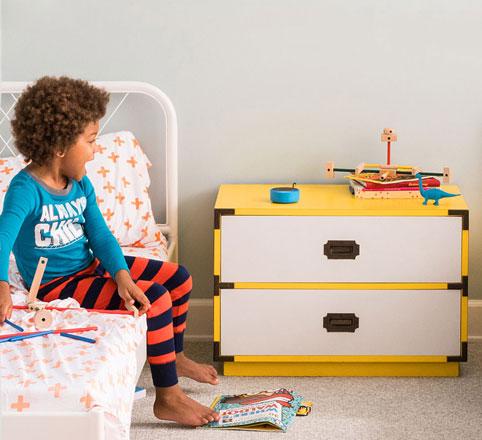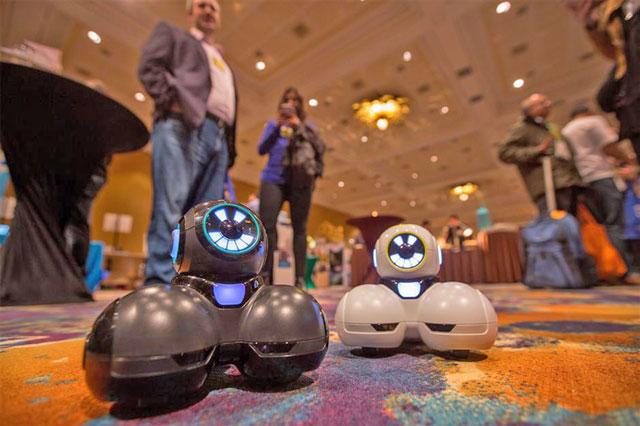You are here
Kiddie tablets ‘grow up’ as competition grows
By AP - Dec 26,2015 - Last updated at Dec 26,2015

Photo courtesy of open-media-community.com
NEW YORK — Kiddie tablets have grown up.
Tablets designed just for kids are getting more sophisticated as they face increased competition from regular tablets. The new products also have better screens, speedier chips and fashionably slim bodies. They let older children do more, yet hold their hands until they’re ready for unsupervised access.
Although many of the tablets were originally conceived as educational toys for kids as old as middle schoolers, they’ve been more popular with younger children. Older kids have been apt to reject them in favour of their parents’ tablet or smartphone.
That shift has prompted companies to focus more on preschoolers and kindergarteners, as they create super-durable products that can withstand repeated abuse and develop games and apps that teach reading and math.
But now, some of those companies are looking to take back some of the sales to older kids that they’ve lost over the years, offering premium products — most with price tags of over $100 — that look and perform less like toys and more like the ones adults use.
LeapFrog, maker of the toy-like LeapPad, released its first Android tablet this year. And Kurio is branching out to Windows 10 and includes a full version of Microsoft Office in a new tablet-laptop combination.
The use of Android and Windows software, in place of the more basic, custom-made systems used in toy tablets, allows for more sophisticated apps and games and a range of content from standard app stores.
Monica Brown, LeapFrog’s vice president for product marketing, said the company aimed to “create something that was kind of sleek and more tech forward for kids who were looking for something that felt like their parents’ tablet”.
But parents still want educational content and safety features that come with a tablet designed purely for kids. LeapFrog’s Epic, along with the other new tablets for kids, are attempts to bridge that gap.
The Epic looks like a regular Android tablet, but comes with a removable bright-green bumper. It is much faster than a LeapPad and can run versions of popular Android games such as “Fruit Ninja” and “Doodle Jump”. There’s access to the Internet, but it’s limited to about 10,000 kid-safe websites (though parents can add others). Parents can also limit and track how much time a child spends watching videos, playing games or reading.
Lynn Schofield Clark, a professor of media studies at the University of Denver, said kids tablets are a tough sell these days.
“Kids are always aspirational in their ages, and they’re always interested in what older kids are doing,” Clark said, pointing to the fascination that many preteens have with smartphones as a prime example.
Meanwhile, most parents won’t spend money on kids-only gadgets unless they believe they offer significant educational benefits.
“If they’re just looking for something to entertain their kid, then why wouldn’t they just hand over their smartphone?” she asked.
Kurio aims to answer that question with the Smart, a device that let kids do things they previously might have needed their parents’ laptop for, such as typing up and saving their homework online or playing video on their TV through an HDMI cable. The Smart is a Windows 10 laptop with a detachable screen and comes with a free year of Microsoft Office.
Eric Levin, Kurio’s strategic director, said kids using children’s tablets are getting younger, as older kids gravitate towards adult products. Four years ago, he said, most Kurio users ranged from ages 6 to 12. Now, half of them are 3 to 5.
Although older kids may be ready for adult tablets, the shift has left those 8 to 12 without age-appropriate devices, Levin says. The Smart tries to fix that.
Other makers of kids tablets have also gone high-end this year. Fuhu bills the Nabi Elev-8 as a premium, 8-inch tablet. But the company ran into financial problems early in the holiday season, and its products have been tough to find.
Nonetheless, adult tablets remain popular with kids.
Amazon touts its Fire tablet as something the entire family can use, eliminating the need to buy something just for the kids.
“While I appreciate that might have led other companies to adjust their products, we’re upping our game based on what customers want in the best kid experience,” said Aaron Bromberg, senior manager of product management for Amazon Devices.
The tablet’s FreeTime app lets parents set up profiles for each kid, with access to only the content they approve. It also lets parents limit the amount of time spent on different kinds of content such as videos or apps. For an additional fee, Amazon’s FreeTime Unlimited service offers more than 10,000 books, apps, games and videos geared towards kids ages 3 to 10.
Nonetheless, Amazon is selling a kids’ edition tablet for $100. It’s essentially Amazon’s bare-bones $50 Fire tablet packaged with a colourful protective bumper and a year’s subscription to FreeTime Unlimited.
It also comes with a two-year guarantee: If your kid breaks it, Amazon will replace it.
Related Articles
Alexa, hold your horses.Amazon Dot Echo Kids Edition started shipping this week, but children’s advocates and others are asking parents to h
When grown-ups are reading to toddlers, they have more meaningful conversations when the stories are in traditional printed books than
LAS VEGAS — The children’s section at the giant Consumer Electronics Show this week touted “innovations that enable 21st century kids to lea














